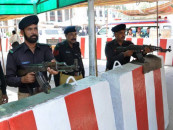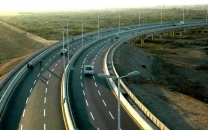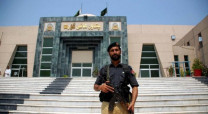CPEC's rapid progress laying foundation for Pakistan’s industrial development: CRI Urdu
'Past five years have seen CPEC projects create 55,000 direct jobs in road infrastructure sector'

The projects implemented under the China-Pakistan Economic Corridor (CPEC), a flagship project of the Belt and Road Initiative, will not only benefit certain areas but also development in Pakistan, commented China Radio International (CRI) Urdu on Sunday.
“The way in which the CPEC projects have been implemented over the past five years and the results that have emerged show that the purpose of building up CPEC is not to benefit certain areas, but to promote development in Pakistan,” the CRI Urdu said of the progress made in the construction of CPEC projects.
The Urdu service stated that the infrastructure, construction of industries and the elimination of energy shortages will provide an environment for Pakistan according to its resources, which will also benefit the people of Pakistan and guarantee a bright future.
The Orange Line Metro train in Lahore is the first electric public transport project, the introduction of which not only increased travel facilities for the people but also created new jobs.
In the past five years, CPEC projects have created 55,000 direct jobs in the road infrastructure sector, of which 48,000 have been created specifically for local Pakistanis.
According to a spokesman for the Chinese Ministry of Foreign Affairs, major projects with a direct investment of US $25 billion have been completed since the inception of CPEC. The projects completed under it are are part of The Belt and Road Initiative.
As for the shipping of cargo, the trade began at the Gwadar port during the first six months of this year, through which up to 20,000 tons of goods were shipped to Afghanistan; the initiative also created jobs in the shipping sector. There was no doubt that these projects entailed infrastructure as well as energy supply, and job opportunities, the CRI maintained.
According to the proposed two-gap model of economist Hollis B Channery, developing countries should introduce foreign investment and stimulate exports to boost their national economies. In this regard, CPEC has played an important role in the development of Pakistan.
The initiative has also addressed the issue of limited investment potential, insufficient foreign exchange savings and deficits in Pakistan, and has provided excellent quality for Pakistan’s economic growth.
Pakistan’s GDP growth rate is significant and it has created 70,000 jobs in Pakistan, the China-based Urdu service added.
Since its inception, CPEC has considered the elimination of energy shortages in Pakistan as an important sector for construction. Over a period of five years, energy projects under the CPEC framework added 3,340 MW of electricity to Pakistan in early April 2019, accounting for 11% of the installed capacity in the country.
The shortage of electricity has been significantly reduced and in addition to power generation projects, China has built the Matiari-Lahore (an 878 km long, 660 kV) HVDC transmission line project in Pakistan – the second HVDC transmission line in the world to extend the life of the country's power grid.
The construction of the corridor is progressing rapidly, significantly reducing Pakistan's energy problem in the process. Improvement in the transportation infrastructure has laid the foundation for the industrial development of Pakistan. The next phase of the project focuses on industrial cooperation.
Given the pace of the projects, their completion and results, it can be said that CPEC is undoubtedly a new impetus for the sustainable development of Pakistan, the CRI added.



















COMMENTS
Comments are moderated and generally will be posted if they are on-topic and not abusive.
For more information, please see our Comments FAQ